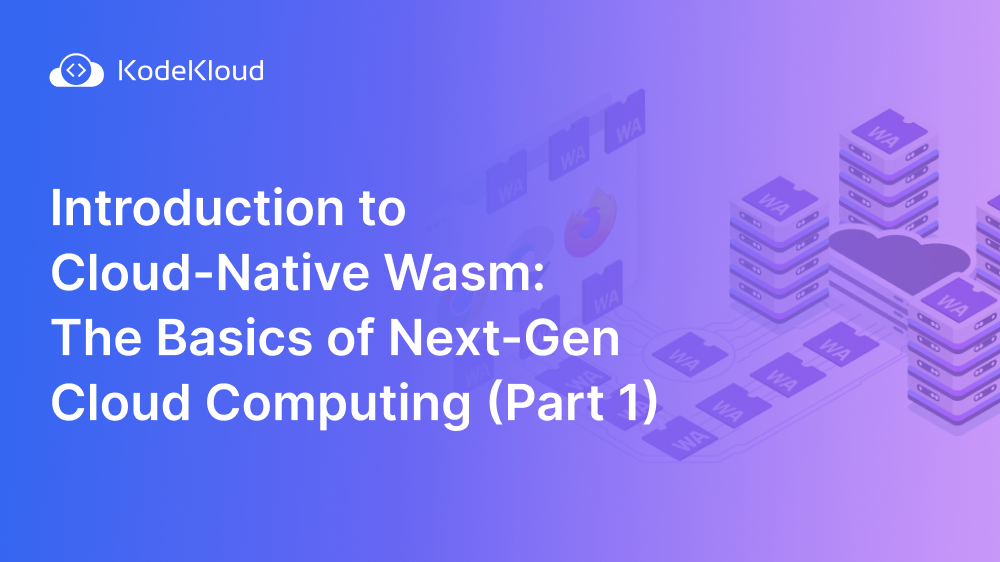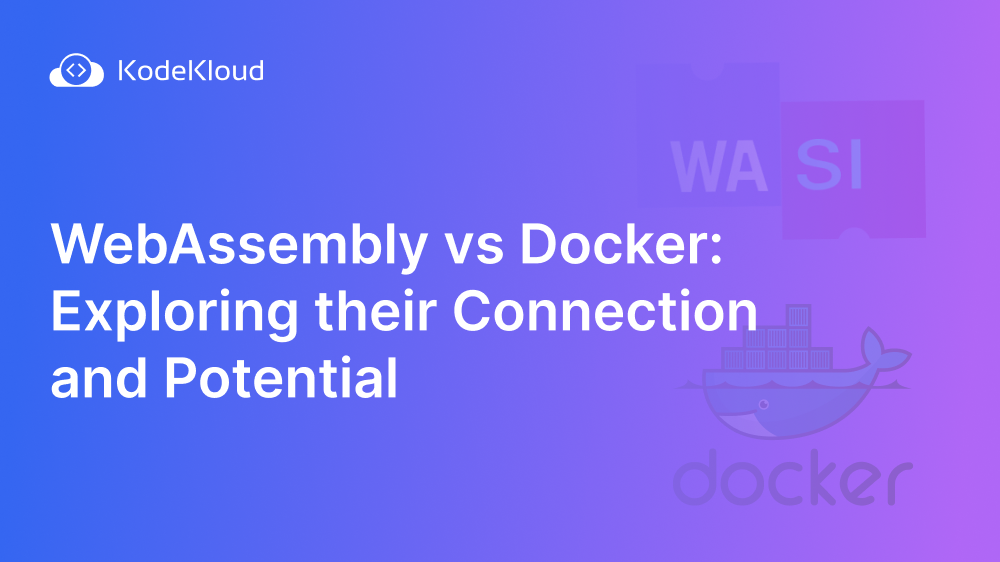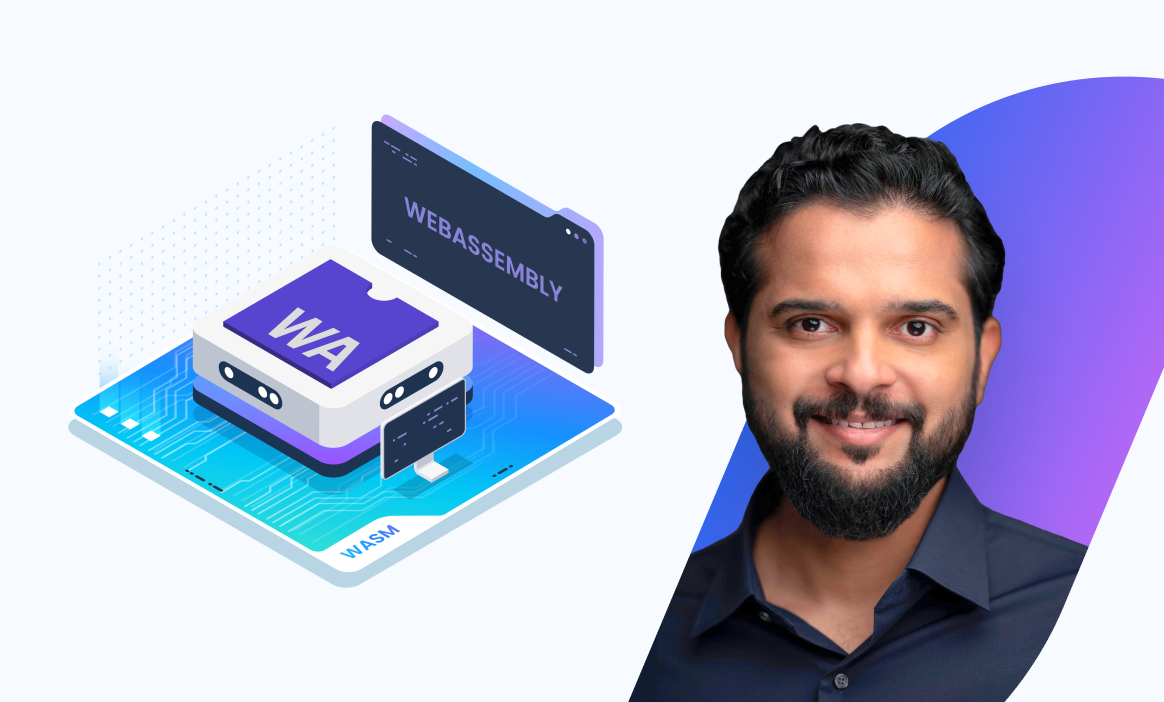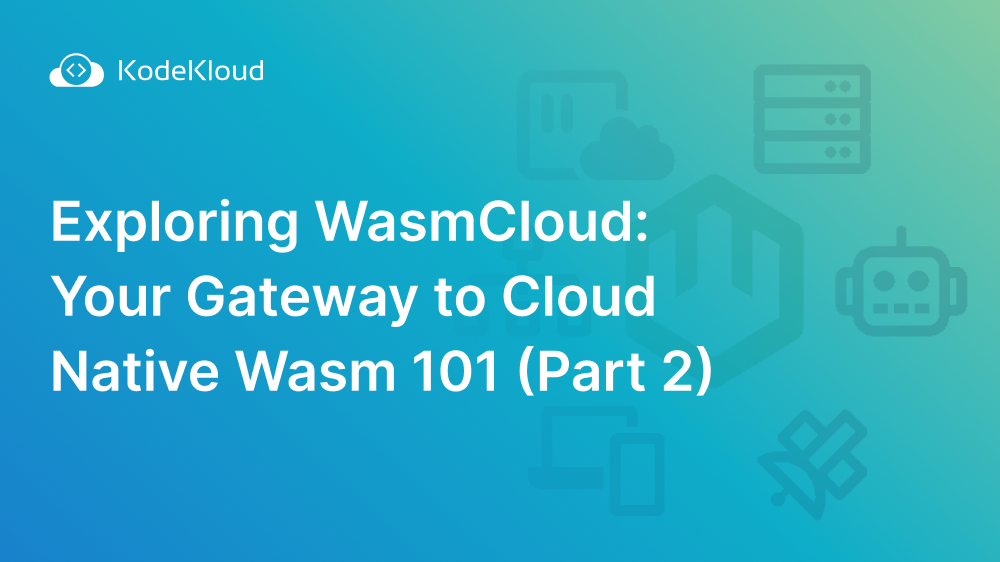In the first part of our Cloud Native Wasm 101 series, we explored the basics of WebAssembly (Wasm) and its potential in the cloud-native landscape.

Now, let's dive deeper into the world of Wasm through a practical scenario, and then introduce WasmCloud,
a framework that leverages the power of Wasm to build secure, portable, and scalable cloud-native applications.
The Burning Need for a WASM Framework
Imagine you're part of a development team tasked with creating a cloud-native photo editing application that needs to run across various platforms - Windows, macOS, Linux, and even within web browsers. The application must be highly responsive and secure and provide a consistent user experience across all platforms.
Traditionally, you would have to write and maintain separate application versions for each platform, each with its own set of dependencies and potential security vulnerabilities. This approach is not only time-consuming and error-prone, but it also leads to a fragmented user experience, as each version of the application might behave slightly differently.
This is where Wasm and a framework like WasmCloud come into play.
WebAssembly (Wasm) has revolutionized development by enabling write-once, run-anywhere functionality. However, to truly harness Wasm's power, a robust framework like WasmCloud is essential.
Before we proceed, I recommend checking out the following blog posts and videos to enhance your understanding of WebAssembly (WASM).

While Wasm allows you to write your code once and compile it to run on any platform with a Wasm runtime, WasmCloud takes this a step further. It not only facilitates the execution of Wasm code across diverse platforms, but also provides a secure, efficient, and scalable environment for application development and deployment.
With WasmCloud, you can seamlessly deploy your Wasm applications to the cloud, edge devices, IoT devices, and more without the need for platform-specific adaptations. It provides a secure sandbox for running your WebAssembly modules, minimizing potential security risks. Moreover, it supports actor-based programming, enabling efficient communication between different components of an application.
Each piece of your application runs in its own isolated environment, providing an additional layer of security. This means that even if a malicious actor manages to exploit a vulnerability in one part of your application, they would be confined to that isolated environment and wouldn't be able to affect the rest of the system.
Additionally, because Wasm code is lightweight and starts up quickly, your application can respond and scale rapidly to user demand. This is especially important for a photo editing application, which needs to be highly responsive to provide a smooth user experience.
A Wasm framework like WasmCloud addresses the challenges of traditional development methods, providing a path toward more secure, efficient, and portable applications. It allows developers to focus on writing their business logic without having to worry about the complexities of cross-platform compatibility, security, and performance. This is the burning need that a Wasm framework like WasmCloud fulfills.
Introducing WasmCloud: Redefining Application Development
WasmCloud is a transformative framework that paves the way for the development of applications that are globally distributed, extending from the cloud right to the edge. It capitalizes on the inherent security, portability, and performance of WebAssembly, facilitating the creation of applications from compact, autonomous building blocks that are loosely connected to capabilities.
The beauty of WasmCloud lies in its flexibility. It allows you to adjust the nature of your application - be it a serverless function, a microservice, a globally distributed app, or a monolith - at runtime. This flexibility is a game-changer, liberating developers from being locked into a single decision from the inception to the retirement of the application.
WasmCloud is built on several fundamental principles
Simplicity in Distributed Applications: WasmCloud streamlines the process of creating distributed applications, enabling you to concentrate on crafting the code that truly matters.
Universal Execution: WasmCloud empowers you to write your code once and execute it anywhere, from the cloud to the edge. This level of portability streamlines the deployment process and guarantees a uniform user experience across all platforms.
Inherent Security: WasmCloud leverages the robust security features of WebAssembly to provide a secure execution environment for your applications. Each component of your application operates in its own isolated sandbox, adding an extra layer of security and preventing malicious actors from exploiting vulnerabilities in your application or the host system.
Efficiency and Cost-effectiveness: By simplifying the development process and eliminating the need for multiple versions of your application for different platforms, WasmCloud can save you significant time, money, and effort.
Boosting Productivity for Developers and Operations: WasmCloud is designed to enhance productivity for both developers and operations teams. It provides a unified framework for building, deploying, and managing applications, reducing the complexity and overhead associated with traditional development methods.
With WasmCloud, there's no need to alter your design, architecture, or programming environment as you transition from concept to production. It's all about infusing joy into the process of building applications on a global scale.
Understanding WasmCloud Components
To fully grasp the power and flexibility of WasmCloud, it's essential to understand its core components:
the host, actors, and capabilities.
Let's use our photo editing application as an example to illustrate these components.
The Host: The Conductor of the Orchestra
Think of the host in WasmCloud as the conductor of an orchestra. It doesn't play an instrument itself but ensures that all the musicians (actors and capabilities) perform in harmony. In our photo editing application, the host is the environment that runs our application, managing the resources and orchestrating the interactions between the different parts of our application.
Actors: The Musicians in the Orchestra
Actors in WasmCloud are like the musicians in an orchestra. Each musician plays a specific instrument, just as each actor in WasmCloud performs a specific task. In our photo editing application, we could have different actors for different tasks, such as one for cropping images, one for adjusting brightness, and so on.
Actors are reactive, meaning they only perform when they receive a message from the host. This is similar to how a musician waits for the conductor's cue before playing their instrument. This design allows for efficient multi-tasking and high performance, as each actor operates independently and can perform its task without waiting for others to finish.
Capabilities: The Instruments in the Orchestra
Capabilities in WasmCloud are like the instruments in an orchestra. They provide the tools that the musicians (actors) need to perform their tasks. In our photo editing application, capabilities could include services like storage (for saving images), networking (for sharing images), or even more complex services like AI-based image enhancement.
Capabilities are provided by capability providers, who are like the caretakers of instruments. They ensure that the instruments (capabilities) are in good condition and ready for use by the musicians (actors).
For instance, when a user wants to save an edited image, the actor responsible for saving the image sends a message to the host. The host, acting as the conductor, would then instruct the appropriate capability provider to perform the save operation. This separation of responsibilities allows for a high degree of modularity and flexibility, as capabilities can be added, removed, or replaced without affecting the actors.

Key Features and Benefits of WasmCloud
WasmCloud is a powerful framework that provides a host of features and benefits for developers working with WebAssembly (Wasm). Here are some of the key features and benefits of WasmCloud, drawn from the official documentation and other online resources:
- Platform Agnostic: WasmCloud enables developers to write their components once and run them anywhere, at any scale. This includes deployment to the cloud, edge devices, browsers, IoT devices, and more. This portability reduces the need for platform-specific code, simplifying development and deployment processes.
- Connected Infrastructure: WasmCloud allows for the clustering of hosts across different clouds and infrastructures. This creates a single flat topology for managing applications without opening any firewall ports. The clusters are self-forming and self-healing and can bridge multiple protocols, extending the cloud to the farthest edge.
- Security and Scalability: WasmCloud supports the development of truly zero-trust applications. It leverages the WebAssembly sandbox and its own cryptographically secure modules to provide a secure execution environment. This approach ensures in-depth defense without compromising the developer experience. The framework is also designed for scalability, allowing applications to grow and adapt to changing requirements.
- Community Support: WasmCloud has a strong community presence, with active participation on platforms like GitHub and Slack. This community support can be invaluable for developers, providing a space for collaboration, problem-solving, and learning.
- Ease of Use: WasmCloud is designed to be easy to use. It provides a simple and intuitive developer experience, allowing developers to focus on writing code and creating applications while the framework handles the operational infrastructure.
- Efficient Networking: WasmCloud provides efficient networking capabilities. It allows for the creation of a logical network, called a lattice, where multiple hosts can coexist. This feature simplifies the management of distributed applications and enhances their performance.
- Control Interface: WasmCloud includes a control interface that allows hosts to be remotely controlled. This interface also enables the aggregate status of a lattice to be queried, providing valuable insights into the state of the application.
- Developer Productivity: WasmCloud is designed to enhance developer productivity. It reduces the time spent on network plumbing, concurrency, and resiliency, allowing developers to focus more on key features and innovations.
As you embark on this cloud-native Wasm journey with KodeKloud, you will gain practical understanding and hands-on experience with each of these benefits.
Unlock the power of WebAssembly (WASM) with our comprehensive course:

Conclusion
WasmCloud provides a powerful framework for building secure, portable, and scalable cloud-native applications. By leveraging the power of WebAssembly, it allows developers to write their code once and run it anywhere, simplifying the deployment process and reducing maintenance overhead. With its secure execution environment and scalable design, WasmCloud is set to play a key role in the future of cloud-native development.
Coming Up...
In the next part of our series, we'll delve deeper into how to build and deploy applications with WasmCloud. We'll explore the tools and techniques you can use to develop WasmCloud applications, and we'll walk you through the process of deploying a WasmCloud application to a cloud environment. Stay tuned!




















Discussion